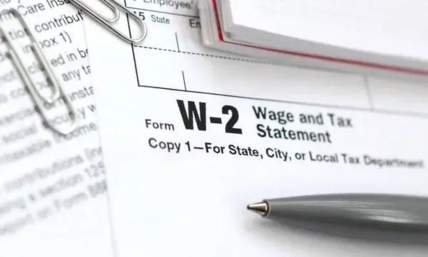Is Retained Earnings An Asset? - What To Know
In modern times, there is a lot of pressure on small business owners, and they have to work harder than ever to keep their heads above water in an aggressive and temperamental commercial marketplace.
But in a system which seems designed to hurt the little guy, how does the average business owner hope to survive?
Whilst diversification has become a prominent part of the business model in fields such as manufacturing, retail, and the service industry, another tactic has been to make the most of their finances, so that they are working for the owners, not the banks.
Retained earnings accounts are no different, and are employed by many to keep a tidy track of their residual earnings. But what exactly are retained earnings, and are they really an asset?
Also read: 8 Steps To Create An Effective Employment Development Plan For Your Small Business And Its Benefits

What Are Retained Earnings?
Within the context of a company or business, retained earnings represent the accumulated net income of the company that is retained by them at any one time.
These can be used for several purposes, but are generally used as a pot for investing, or to pay off any outstanding debts from the previous period.
Money kept in this account is often employed as a business cash reserve, or as working capital - the capital of a business used in its day to day trading operations, calculated by the current liabilities deducted from the current assets.
Also read: Payroll Tax Vs Income Tax - The Ultimate Guide
Reinvestment
Retained earnings can be reinvested through several means. Often they are used to purchase more capital, expanding business operations, funding acquisitions and mergers, or through the launch of new product lines.
Growth is a common bi-product of reinvested earnings, and can be done through purchasing new premises, amassing new equipment, or hiring new employees - all of which can then facilitate the company’s ability to take on larger projects and contracts.
Dividends
Alternatively, the retained earnings may be used to either settle outstanding debts, or pay cash or stock dividends to existing shareholders.
This is an example of general “housekeeping” within a business setting. The settling of debts is good for the alleviation of financial strain, and can free up funds in the future for reinvestment.
Similarly, cash and stock dividends can be paid to existing shareholders, either as a means of placating them, or ensuring continued investment in the future - something more or less guaranteed when they see some substantial monetary return.
Also read: What Should I Do If My Employer Won’t Provide A Pay Stub?
How Are Retained Earnings Calculated?
Of course, even the notion of calculating such earnings can seem like a daunting task, especially to smaller, independent companies with limited resources and access to accountants.
The main things to remember are the company’s previous retained earnings, the net income, and the dividends that have been paid to investors.
The previous retained earnings should be able to be found on past balance forms, or on a statement of retained earnings. The other pieces of information, the net income and the paid dividends, can be found on past profit & loss statements, and transaction receipts respectively.

The Equation
The equation for calculating this figure goes as follows:
Retained earnings = beginning retained earnings + net income/net loss - dividends paid.
Beginning retained earnings are generally the retained earnings of the previous financial year. However, if the business is brand new, then the beginning retained earnings would be calculated as $0.
Net income is the total sum of a company’s income, minus the cost of goods sold, any business expenses, depreciation, amortization (the spreading of payments), taxes for an accounting period, and interest.
Net loss refers to when the above mentioned business expenses outweigh the net income, meaning that the company is losing money, and therefore unsuccessful.
This can be as simple as insufficient output, unsuccessful marketing campaigns, and the rising cost of manufactured products when compared to the price at which they are sold.
When representing net loss, this can be done using the following equation:
Retained earnings = beginning retained earnings + (net loss) - dividends.
Are They An Asset?
Technically speaking, retained earnings are not an asset in their basic form. They are merely a line on an equity statement, but there are several things that can indeed be done to make them an asset.
Firstly, any form of reinvestment of these retained earnings would qualify them as a financial asset, as they are actively contributing to the growth of the company in some form or another.
Secondly, the use of them as dividends for shareholders would also make them an asset, due to the transactional nature of the exchange. In many cases this too results in reinvestment within the company, and under these circumstances it would definitely qualify as an asset.
Also read: Make a Budget in Excel
Retained Earnings Vs Revenue
When it comes to denoting the success of your company, both retained earnings and revenue can be useful ways of measuring success.
Revenue represents the gross income from sales, and thus if this figure outweighs the expenses, it would indicate that the company is in financial profit.
Revenue doesn’t take into account the COGS (or cost of goods sold), and as such it is a reliable indicator of success.
The only notable difference between the two is that revenue is noted as an asset on financial statements, whereas retained earnings aren’t.
This is purely due to the nature of their existence within the company’s financial hierarchy, and is really more a case of semantics than any sort of actual problem.

Final Thoughts
And there we have it, everything you need to know about retained earnings, their use within a business setting, and the context in which they are viewed as a financial asset.
Ultimately, retained earnings are a great indicator of how much residual capital you have to operate with, allowing business owners to make more informed choices when it comes to investments.
The most important thing is to maintain detailed bookkeeping, and to never be afraid to seek financial assistance or advice if the situation demands it.
Your check stubs can be a great way for you to keep track of your finances so you can easily add the figures to your spreadsheet.
Also read: How Many Savings Accounts Should I Have?















